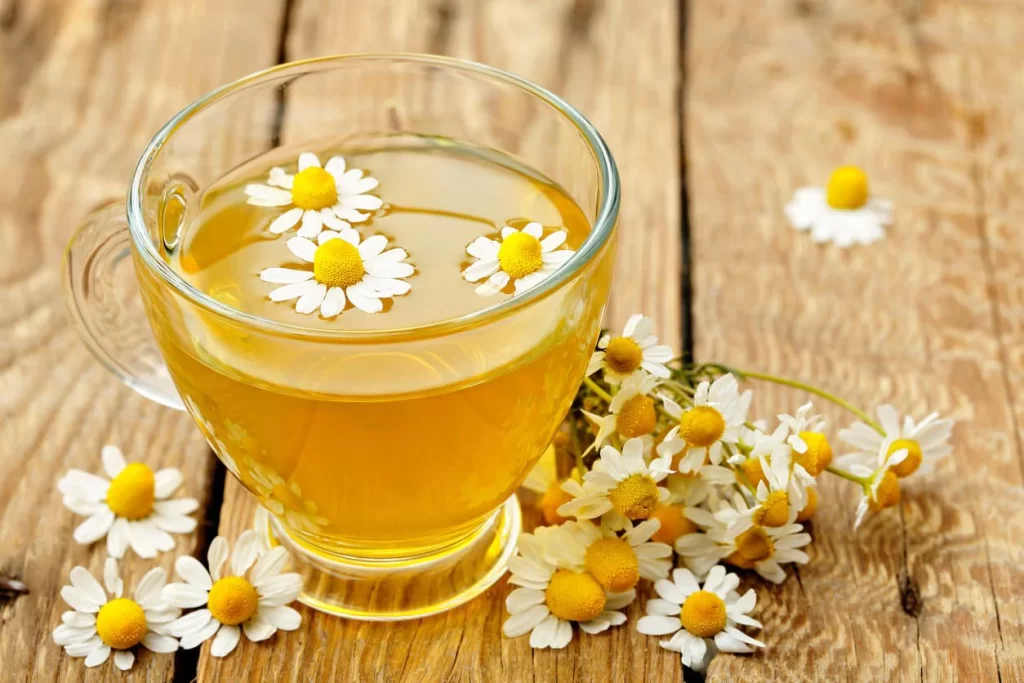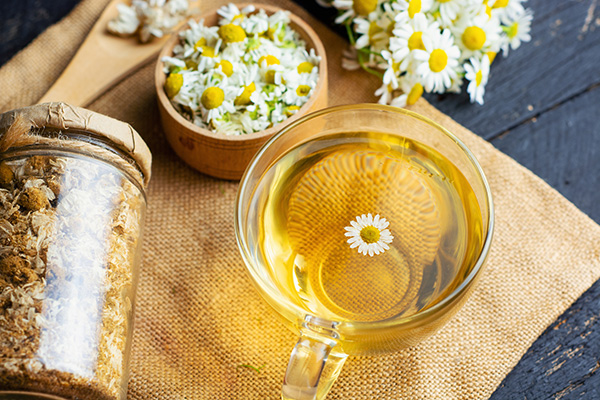Chamomile Tea: A Source of Peace from Nature

1.The History and Origin of Cha-momile Tea
1.1 Usage in Ancient Times
The origins of cha-momile tea date back to ancient civilizations. In ancient times, both the Egyptian and Greek civilizations utilized this plant for medicinal purposes. Chamomile flowers were considered a panacea by these cultures.
In Egypt, cha-momile flowers were used for wound care due to their antiseptic and anti-inflammatory properties. They were also valued for beauty and skincare. Chamomile oil became a key component in enhancing hair and skin health.
The Greeks used chamomile flowers to reduce inflammation and alleviate digestive discomfort. They also believed it was effective in addressing sleep issues. Hippocrates, the renowned Greek physician, prescribed chamomile flowers for the treatment of various ailments.
1.2 Effects in Different Cultures
The effects of cha-momile tea vary across different cultures, each with its unique usage traditions.
In the Middle East, cha-momile tea is often consumed as a social beverage. In this region, it is associated with hospitality and friendship. It is also consumed to aid digestion and alleviate stomach discomfort after meals.
In Asia, the use of cha-momile tea is primarily associated with its potential health benefits. In traditional Chinese medicine, cha-momile tea is considered a calming beverage. It is believed to help reduce stress, improve sleep quality, and balance the nervous system.
In the Western world, cha-momile tea has gained popularity in recent years. It is often seen as an anti-stress beverage, and people consume it to reduce stress and promote relaxation in their daily lives.
In conclusion, the history and cultural usage of cha-momile tea are rich and diverse. This plant has been used for centuries for health, beauty, and relaxation purposes in various societies, and this tradition continues to the present day.
2. How to Prepare Chamomile Tea?
Preparing cha-momile tea correctly is essential for both flavor and health benefits. In this section, we will discuss the necessary ingredients, the steeping process, and serving methods.

2.1 Ingredients and Equipment
To make cha-momile tea, you will need essential ingredients and equipment. These may include:
- Dried chamomile flowers: You need fresh and high-quality chamomile flowers to make a quality cha-momile tea. You can usually find them in stores or online retailers.
- Boiling water: The water used to steep cha-momile tea should be boiling. Generally, a temperature of 90-95°C (194-203°F) is recommended.
- Teapot or kettle: You can use a teapot or kettle to steep chamomile tea. Materials like glass or porcelain are preferred as they won’t affect the tea’s flavor.
2.2 The Proper Steeping Process
Steeping cha-momile tea correctly is crucial to maximize its flavor and health benefits. Here are the steps for the proper steeping process:
2.2.1 Water Temperature and Steeping Time
- Heat the water to 90-95°C (194-203°F). Hot water extracts the flavors and essence of chamomile flowers better.
- Add the dried chamomile flowers to your teapot or kettle. Usually, one teaspoon of chamomile flowers per cup of water is recommended.
- Pour the boiling water over the chamomile flowers and immediately cover.
- The steeping time is generally between 5 to 10 minutes. This duration determines how strong or light the tea will be. Longer steeping times result in a stronger tea.
2.2.2 Different Steeping Methods
While steeping cha-momile tea, you can try different methods to personalize the tea’s taste. For instance, you can make the tea stronger by adding more chamomile flowers. You can also enhance the flavor by adding ingredients like honey or lemon.
2.3 Serving and Presentation
Before serving cha-momile tea, you can follow these steps:
- After the steeping time is complete, open the teapot or kettle.
- Pour the tea into cups. Drinking the tea without straining the chamomile flowers is a preferred method, but if you wish to strain the flowers, you can use a fine sieve.
- You can serve cha-momile tea hot or cold. Optionally, you can add sweeteners like honey, lemon slices, or cinnamon sticks to enhance the flavor.
This way, you can prepare cha-momile tea correctly and enjoy a flavorful and healthy beverage.
3. Chamomile Tea’s Chemical Composition
In this section, we will delve into the chemical composition of cha-momile tea, highlighting its key components and active compounds.
3.1 Bisabolol and Chamazulene
- Bisabolol: Bisabolol is one of the primary components of chamomile flowers. It is well-known for its anti-inflammatory properties and is often used for soothing skin irritations. Bisabolol contributes to cha-momile tea’s calming effects.
- Chamazulene: Chamazulene is another key compound found in chamomile flowers, responsible for the characteristic blue color when cha-momile tea is brewed. It possesses anti-inflammatory and antioxidant properties, contributing to the tea’s potential health benefits.
3.2 Other Active Compounds
Apart from bisabolol and chamazulene, chamomile tea contains various other active compounds, such as flavonoids and polyphenols. These compounds have antioxidant properties that protect the body from oxidative stress and help maintain overall health.
4. Health Benefits of Chamomile Tea
Chamomile tea is celebrated for its potential health benefits. In this section, we will explore the various advantages it offers.
4.1 Reducing Stress and Anxiety
- Chamomile tea is renowned for its calming properties. It can help alleviate stress and anxiety, making it an excellent choice for relaxation.
4.2 Effects on Insomnia
- Chamomile tea is considered a natural remedy for insomnia. Its soothing qualities can promote better sleep quality and help combat sleep disturbances.
4.3 Soothing the Stomach and Supporting Digestion
- Many individuals turn to chamomile tea for relief from stomach discomfort and indigestion. It can aid in digestion and provide relief from gastrointestinal issues.
4.4 Antioxidant Effects
- The presence of antioxidants in chamomile tea helps combat free radicals, which can lead to various health issues. Consuming chamomile tea regularly may contribute to overall well-being.
4.5 Anti-Inflammatory Properties
- Chamomile tea’s anti-inflammatory properties can be beneficial for reducing inflammation throughout the body. This can be particularly advantageous in managing chronic conditions.
5. Side Effects and Cautions of Chamomile Tea
While chamomile tea offers numerous benefits, it’s essential to be aware of potential side effects and precautions.
5.1 Possible Effects of Excessive Consumption
- Excessive consumption of chamomile tea can lead to side effects like nausea and vomiting. It’s crucial to moderate your intake.
5.2 Usage During Pregnancy and Nursing
- Pregnant and nursing women should exercise caution when consuming chamomile tea. It’s advisable to consult with a healthcare professional before including it in their diet.
5.3 Allergens and Drug Interactions
- Chamomile may trigger allergies in some individuals. Additionally, it can interact with certain medications, affecting their effectiveness. Always consult your healthcare provider if you are unsure about potential interactions.
6. Chamomile Tea’s Usage in Different Cultures
Chamomile tea has diverse uses and traditions across various cultures. We will explore these cultural differences and how chamomile tea is integrated into different societies.
6.1 Contrasts Between the Eastern and Western Worlds
- The preferences and applications of chamomile tea differ between Eastern and Western cultures. These distinctions reflect varying cultural and historical backgrounds.
6.2 Traditional Rituals and Medicinal Uses
- Chamomile tea has been a part of traditional rituals and has served medicinal purposes in various regions. We will explore its role in the Middle East and Mediterranean, as well as its usage in Asia and the Far East.
7. Conclusion: Discover Natural Serenity with Chamomile Tea
In the concluding section, we will discuss the integration of chamomile tea into your daily life and the personal benefits it can provide. Chamomile tea can be your natural source of serenity and well-being.
7.2 Personal Benefits of Chamomile Tea
The personal benefits of chamomile tea can be impressive in many ways. Here are some of its personal advantages:
- Reducing Stress and Anxiety: Chamomile tea, thanks to its components like bisabolol and chamazulene, can soothe nerves and assist in coping with stress. Having a cup of chamomile tea at the end of a tense day can help you relax.
- Effects on Insomnia: Chamomile tea can serve as an effective natural remedy for insomnia. Its calming properties can improve sleep quality and provide a peaceful night’s rest.
- Soothing the Stomach and Supporting Digestion: Chamomile tea can help alleviate stomach discomfort. It is known for its potential to relieve digestive issues such as indigestion, stomach cramps, and bloating.
- Antioxidant Effects: Chamomile tea contains antioxidants that can protect the body against free radicals. This can support cellular health and potentially reduce the effects of aging.
- Anti-Inflammatory Properties: Chamomile tea may effectively reduce inflammation, which can alleviate issues such as muscle aches, headaches, and rheumatism.
7.3 Chamomile Tea in the Pursuit of Natural Serenity and Well-being
Chamomile tea serves as a symbol of natural serenity and well-being. It offers a break and a moment for self-care, a crucial opportunity to cope with today’s fast-paced and stressful lifestyles. A warm cup of chamomile tea can help you unwind and rediscover inner peace. Its calming and medicinal properties can aid in rebalancing your body and mind. Chamomile tea is a gift from nature, preferred by many seeking to reduce stress, find tranquility, and promote their overall well-being in a world filled with hustle and bustle.
